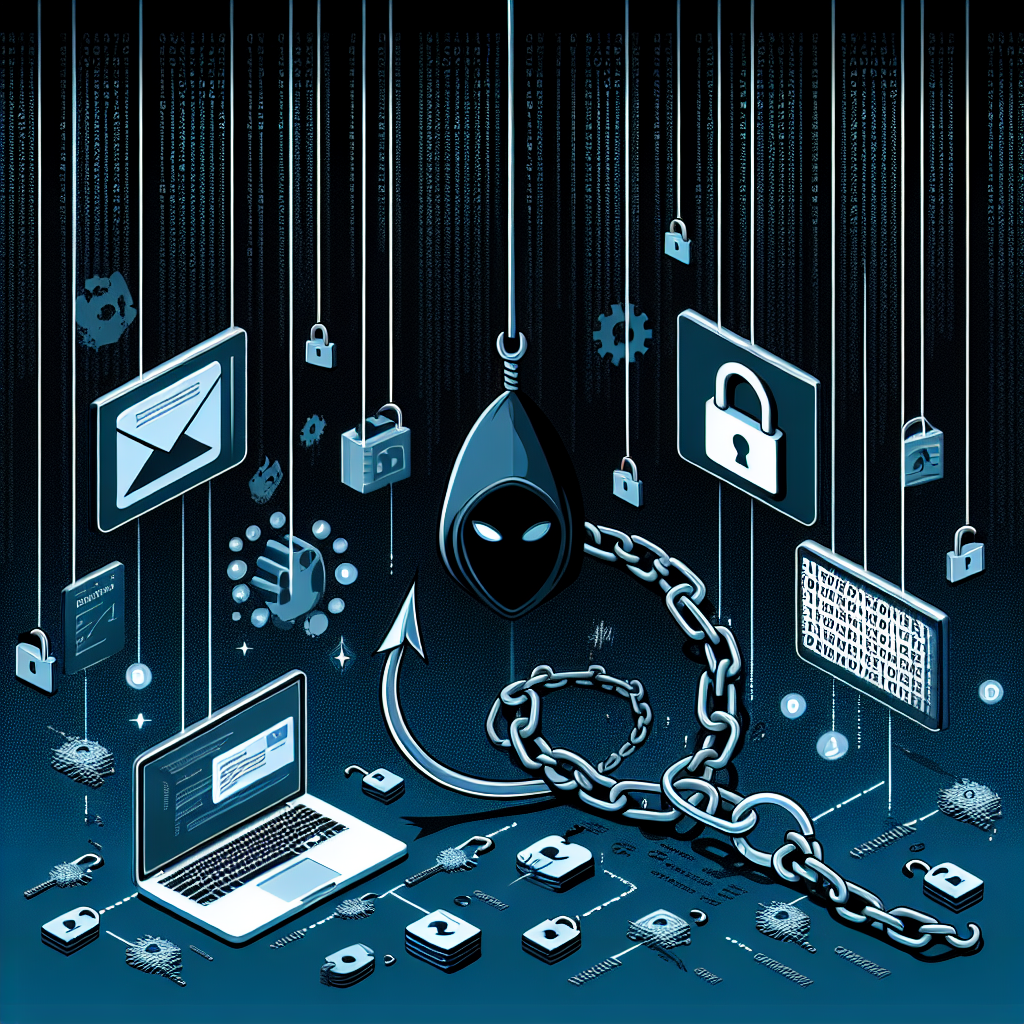
Introduction
In the digital age, where our lives are increasingly intertwined with technology, cybercrime has surged to unprecedented levels. The threats range from innocuous-sounding phishing attempts to more nefarious schemes involving ransomware that can cripple entire organizations. Understanding the landscape of cybercrime—from phishing to ransomware: a deep dive into cybercrime tactics—is not just for cybersecurity professionals but is essential for every internet user. Every click, every email, and every online transaction can become a target for malicious actors.
The reality is stark: worldwide losses due to cybercrime are estimated to reach $10.5 trillion annually by 2025. With that staggering figure in mind, it’s clear that knowledge is power. Understanding how these tactics evolve enables individuals and organizations to better protect themselves.
The Cybercrime Landscape
Understanding Cybercrime
Cybercrime encompasses a wide array of malicious activities carried out in cyberspace. Not all cybercrimes are created equal, and they can be categorized into several classes, notably:
- Phishing
- Ransomware
- Malware
- Identity Theft
- Denial of Service (DoS) Attacks
As we explore these categories, it’s crucial to understand how they intertwine and morph into more complex forms.
The Rise of Phishing Attacks
What is Phishing?
Phishing remains one of the most prevalent forms of cybercrime. It involves tricking individuals into revealing sensitive information—such as usernames, passwords, and credit card details—by masquerading as a trustworthy entity.
For instance, attackers might send emails that appear to be from a reputable bank or online service. These emails often include urgent calls to action, enticing users to click a link that leads to a fraudulent website.
Case Study: The Google and Facebook Scam
In a striking case, a Lithuanian man scammed Google and Facebook out of $122 million over two years by sending counterfeit invoices. He impersonated a vendor and used phishing techniques to convince these tech giants to transfer money into his accounts. This incident highlights not only the effectiveness of phishing but also the staggering impact it can have.
Ransomware: The New Age of Cyber Extortion
What is Ransomware?
Ransomware is malware that encrypts a victim’s files, making them inaccessible until a ransom is paid. This tactic has evolved in sophistication and targeting—from small businesses to large corporations, government agencies, and even hospitals.
Case Study: The Colonial Pipeline Attack
In May 2021, Colonial Pipeline, a major U.S. fuel transporter, fell victim to a ransomware attack that forced it to shut down operations, resulting in fuel shortages across the East Coast. The attackers demanded a ransom of $4.4 million in Bitcoin, illustrating the severe impacts ransomware incidents can have on essential infrastructure.
Progression from Phishing to Ransomware
The Transition from Basic Tactics to Complex Strategies
Phishing can serve as the entry point for more complex cybercrimes, including ransomware. A successful phishing attempt may allow hackers to gain access to sensitive parts of an organization’s network, enabling them to deploy ransomware.
Understanding the Phishing-Ransomware Pipeline
Initial Contact: Cybercriminals initiate contact via email, often including a link or attachment designed to exploit user trust.
Gaining Access: Once a user falls for the phishing scam, attackers can install a backdoor into the system, providing ongoing access.
Data Extraction: They may steal sensitive data, which can be used for identity theft or sold on dark web marketplaces.
- Ransomware Deployment: Finally, cybercriminals can execute ransomware, locking valuable files and demanding payment for their release. This strategy shows how from phishing to ransomware can be a seamless, single-threaded approach to cybercrime.
Case Study: The WannaCry Ransomware Attack
The WannaCry ransomware attack of 2017 was a global cyber incident that affected hundreds of thousands of computers across 150 countries. Attackers exploited unpatched Windows vulnerabilities, facilitating the spread of ransomware. The attack highlighted vulnerabilities across numerous institutions, including healthcare systems that were paralyzed, showcasing the cascading effects of cybersecurity failures.
| Attack Date | Scope | Vulnerability Exploited | Damage |
|---|---|---|---|
| May 2017 | Global | SMB protocol | Estimated $4 billion |
Advanced Phishing Techniques: Spear Phishing and Whaling
Spear Phishing
Unlike regular phishing, spear phishing targets a specific individual or organization, making it significantly more insidious. The attacker often spends time researching their target, gaining information to craft a convincing message.
Example: An employee in a finance department might receive an email seemingly from their CEO, asking for urgent wire transfers. The genuine names, email addresses, and even personal information make it difficult to detect.
Whaling
Whaling is a more extreme version of spear phishing, targeting senior executives or high-profile individuals within an organization. The stakes are higher, as the information or access these individuals hold can lead to substantial financial or informational gains for the attackers.
Case Study: The Ubiquiti Networks Incident
In 2015, Ubiquiti Networks, a technology company, lost $46.7 million in a whaling attack where attackers impersonated company executives to initiate fraudulent wire transfers. The sophistication of the attack exemplifies how advanced phishing tactics can lead to severe financial repercussions.
Emerging Threats in Cybercrime
Business Email Compromise (BEC)
BEC is a sophisticated scam that frequently utilizes social engineering tactics. Attackers impersonate a company executive or vendor to trick employees into making wire transfers or revealing sensitive information.
Cryptocurrency and Dark Web Markets
The rise of cryptocurrencies has provided cybercriminals with anonymity and untraceable payments, changing the landscape of cybercrime. The dark web is teeming with illicit goods and services, including phishing kits, malware, and ransomware-as-a-service offerings.
Strategies for Mitigation and Protection
Educating Employees and Users
One of the most effective defenses against cybercrime is education. Organizations should implement regular training sessions focused on recognizing phishing attempts and the importance of cybersecurity protocols.
Implementing Technology Solutions
Email Filtering: Utilize advanced spam filters to catch suspicious emails before they reach users’ inboxes.
Multi-Factor Authentication (MFA): By requiring a second form of verification, MFA can significantly reduce unauthorized access.
- Regular Backups: Regularly backing up data can act as a safeguard against ransomware, ensuring that data can be restored without paying a ransom.
Incident Response Planning
Every organization should have a well-documented incident response plan that outlines the procedures to follow in the event of a cyber attack. This can significantly reduce recovery time and minimize damages.
Conclusion
The journey from phishing to ransomware: a deep dive into cybercrime tactics reveals a continuously evolving landscape marked by increasing sophistication and impact. Understanding these tactics is essential not only for security professionals but for everyone navigating the digital world. While the threat may be daunting, proactive measures can significantly mitigate risks and foster a culture of cybersecurity awareness.
In a world where cybercrime continues to grow, it’s our shared responsibility to arm ourselves with knowledge and stay vigilant. The stakes are high, but with the right approach, we can build a safer online environment for all.
FAQs
1. What is phishing, and how does it work?
Phishing is a cybercrime tactic where attackers impersonate trustworthy entities to trick individuals into divulging sensitive information. This often involves deceptive emails or websites designed to appear legitimate.
2. What is ransomware, and how can I be affected?
Ransomware is malware that encrypts a victim’s files, rendering them inaccessible until a ransom is paid. Victims can include individuals, businesses, and government institutions.
3. How can I recognize phishing attacks?
Look for red flags such as generic greetings, spelling errors, suspicious links, and urgent language that pressures you to act quickly.
4. What measures can I take to protect myself from cybercrime?
Implement strong passwords, enable multi-factor authentication, educate yourself about common scams, and regularly back up your data.
5. What should I do if I become a victim of a phishing attack?
Report the incident to the appropriate authorities, change your passwords immediately, and monitor your accounts for any suspicious activity.
By staying informed and proactive, we can collectively combat the rising tide of cybercrime and safeguard our digital futures.

















